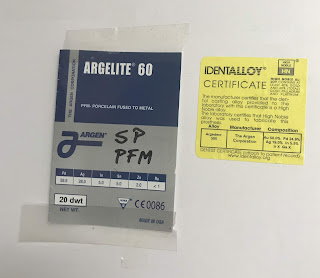Pros of Adult Orthodontics to Explain to Hesitant Patients
Even though more adults than ever now seek orthodontic work for aesthetic reasons, many who could benefit from procedures such as braces nevertheless decline treatments. Orthodontic work benefits overall physical health as well as improves appearance. Why, then, do so many shy away from procedures that could permanently improve their quality of life?
Many patients mistakenly believe that all orthodontic work is inherently cosmetic. Therefore, even those who carry quality dental insurance plans figure they must pay out of pocket even if that assumption is erroneous. The way orthodontists choose to speak with patients greatly impacts their overall motivation to pursue the procedures that could benefit them the most.
Important Considerations for Giving Orthodontics the Green Light
If a practice accepts insurance, they may wish to clarify for patients the extent of their coverage. For example, dental implants for missing teeth have long fallen under the cosmetic umbrella, but now, certain plans do provide some coverage for the procedure. Patients with Health Savings Accounts (HSAs) may likewise use those funds to replace missing teeth, which makes an excellent talking point.
Also inform patients that most insurance plans do cover braces, as failure to correct bite issues can lead to greater health consequences down the road. Some misaligned teeth cause patients substantial pain, which can result in difficulty eating, leading to potential malnutrition or even anorexia in extreme cases.
Teeth can also grow compacted, leading to difficulty flossing. As this issue can result in tooth decay and gum disease, orthodontic work prevents the need for more expensive treatments in the future. Consider this approach when you’re speaking with uninsured patients who are concerned with cost.
How to Speak with Patients More Successfully
Convincing hesitant patients to have needed orthodontic work requires a bit of finesse, but the most important thing for any successful communication remains following the Golden Rule. Patients who feel trusted and respected listen more readily—and are more likely to return to have the suggested work done.
When you’re communicating with patients who indicate hesitance toward orthodontic work, practice the following behaviors as much as possible:
- Begin with courtesy: Address patients by name and greet them warmly. Smile, ask how they’re doing, and exchange a pleasantry or two to help make them feel welcome.
- Listen: Many in the health industry tend to rush ahead with recommendations without first identifying patient concerns. But as those in the sales world well know, it’s difficult to overcome objections without knowing what they are. Practice active listening by responding with reflecting statements, and ask patients what worries them the most about undergoing the procedure.
- Align discussions with patients’ concerns: If a patient expresses financial concerns, recommend the least expensive option first, and discuss the potential costs of waiting. If a patient raises doubts about how orthodontics will impact their appearance, start by discussing options like lingual braces, which are invisible. Patients concerned with both cost and appearance may benefit from ClearChoice® or Invisalign®, which cost between $2,000 and $5,000—considerably less than most lingual/conventional braces options.
- Respect requests for second opinions: Many providers become a bit defensive when a patient informs them that they plan to seek an outside opinion. While not all patients seeking second opinions return, those who do come back do so because they trust their original orthodontist more than any other. As these patients do their due diligence, they’re more likely to keep follow-up appointments and follow care instructions.
- Know when to back off: Even the most convincing sales professionals fail to convert every lead. Every health professional—regardless of their field—encounters patients who say they need time to think but then seemingly fall off the face of the earth. Follow-up marketing costs in employee labor and promotional supplies like postcards. It also takes valuable time away from those patients who do routinely visit, so make sure you know when to throw in the towel.
- Utilize referrals: Patients like to know what their expected treatment outcome will look like. Past patient testimonials paired with photos, when available, convince many individuals uncertain of possible procedures to give the proposed treatment a green light.
Stepping back and removing ego from patient interaction can improve the bedside manner of any care provider. Orthodontists who maintain friendly, positive attitudes—even when a patient initially says no to a recommended procedure—may see these patients change their minds as their trust grows.
Revealing a Beautiful New Smile
Orthodontists know well how the right braces or other procedures will benefit patients’ health and outward appearance, but convincing patients of the value provided takes skill and practice. By maintaining an open mind, presenting a caring demeanor, and honoring patients’ needs, those in the orthodontic industry can grow their profits and improve their reputations while gifting the world with more beautiful smiles.
from The Dental Geek® https://www.thedentalgeek.com/2019/07/pros-of-adult-orthodontics-to-explain-to-hesitant-patients/

Comments
Post a Comment